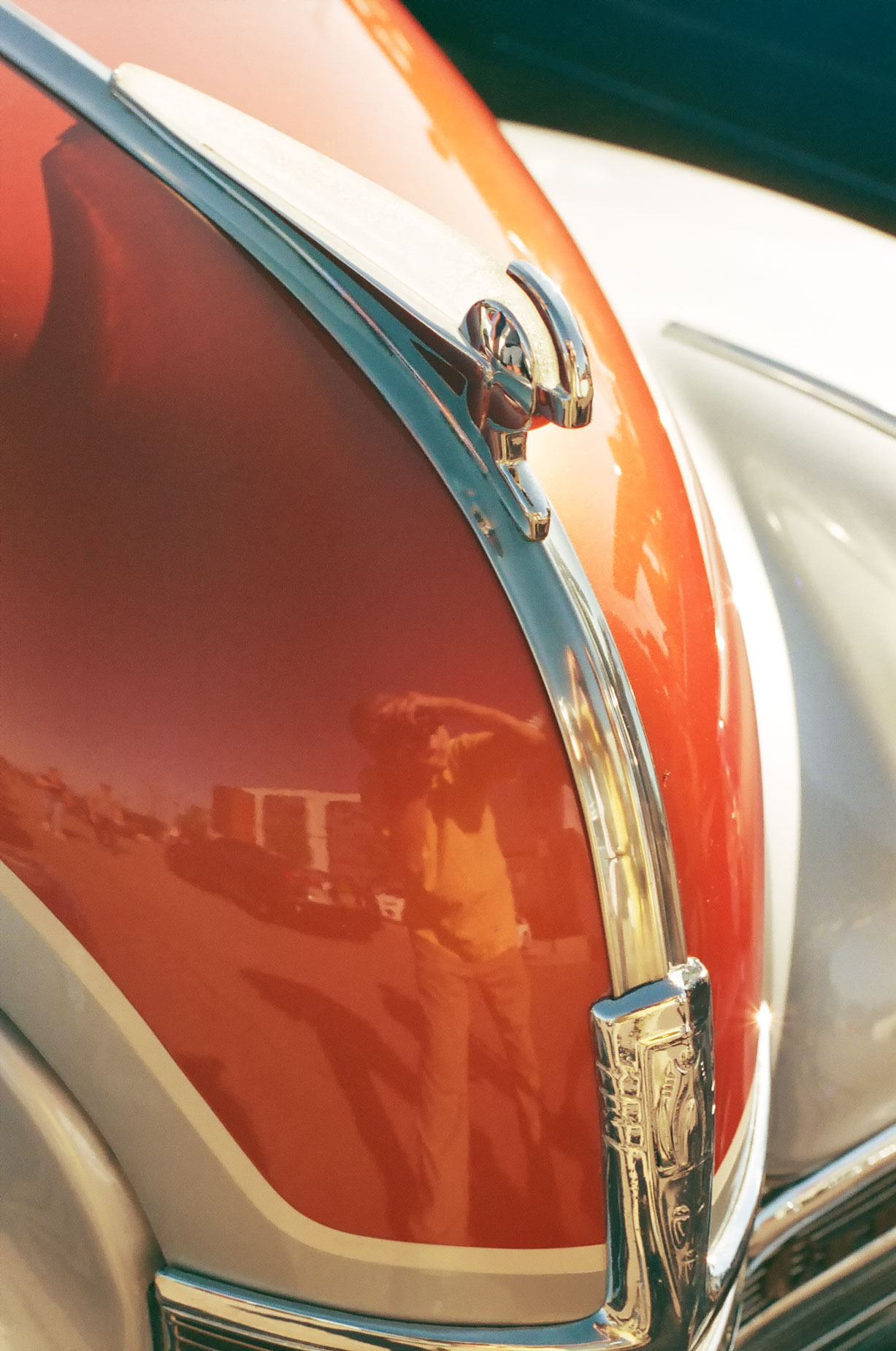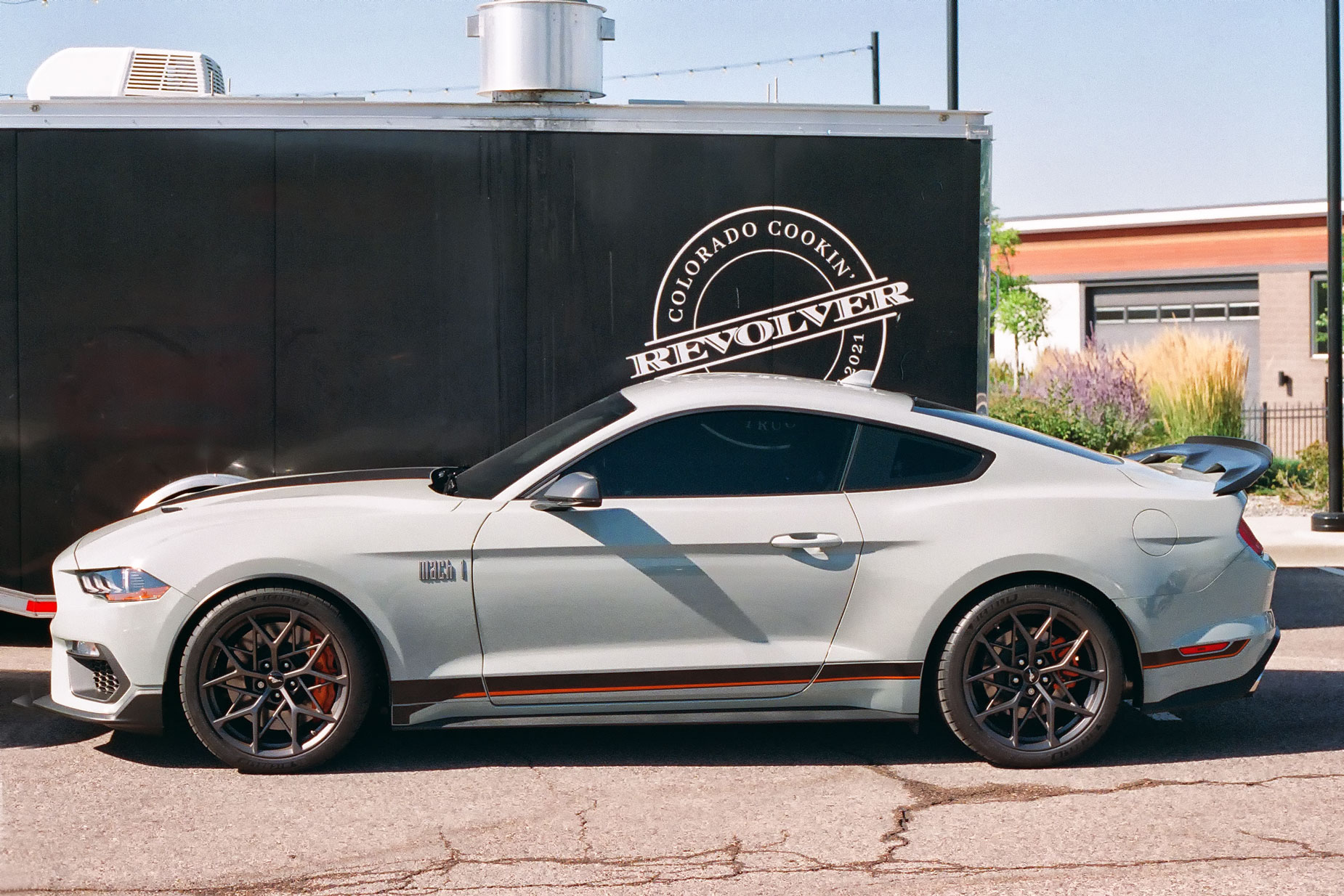Today’s Post by Joe Farace
Today is World Photography Day an annual, worldwide celebration of the art, craft, science and history of photography.The goal of World Photography Day is to create awareness, share ideas and encourage individuals in this field.
 Fujifilm’s Fujicolor NPH 400 Professional was a C-41-based color negative film that had an ISO sensitivity of 400. Launched in 2002, the film was later renamed Fujifilm PRO 400H and on January 14, 2021, Fuji pulled the plug on it in both 35mm and 120 formats.
Fujifilm’s Fujicolor NPH 400 Professional was a C-41-based color negative film that had an ISO sensitivity of 400. Launched in 2002, the film was later renamed Fujifilm PRO 400H and on January 14, 2021, Fuji pulled the plug on it in both 35mm and 120 formats.
Last month I shot a roll of the film at the Vehicle Vault’s monthly Espresso & Exhaust car show and the results were just so-so. This month’s roll, like last month’s, had an expiration date of July 2004. I shot the previous roll with a Contax 167MT adding a one-stop overexposure but it turned out to not be enough. This month’s roll was shot in a Canon A-1 with FD 50mm f/1.8 and used a two-stop overexposure.
I’m writing this having just shipped the film to The Darkroom in San Clemente, California. Last month’s roll was processed and scanned at Mike’s Camera in Lone Tree, Colorado and it took them nine days to do it. The quality of their processing and scanning was, as usual, first class, although the customer-facing experience was less than ideal, so I just dropped this roll in the mail—postage paid—to California.
In The Mystique of Shooting Expired Film I mentioned there was one rule of thumb for shooting old film that stated that you should add one stop of overexposure per decade since the film expired. While not consistent with all of color negative films that I’ve tried, it seemed exactly true with the previous roll of Fujicolor NPH 400. The processed negatives when viewed with a Schneider loupe on a light box, showed variations in exposure from one-half to one full stop underexposed. I should have tried two stops. So I did just that with the latest roll (and my last.NPH 400, for that matter.)
Because of the location, lighting at Vehicle Vault events during the time of day when Espresso & Exhaust is held—9:00AM to Noon—is problematical for still photography. It is almost impossible for video and all of the videos Cliff Lawson and I made here (see’em on Joe Farace’s Videos YouTube channel) have contrast-related exposure problems that we never solved, which may explain why we gave up on shooting those particular videos.
 Flare was especially a problem at this show and when I returned home from the show, I jumped on the Internet and looked for a BS-52 lens hood to fit my Canon FD 50mm f/1.8 lens. I found one on eBay for $39.99 plus $29.99 shipping because, you know, lens hoods are so big and heavy. This is, of course, more than the lens originally cost. I’m still looking for a BS-52 hood. If you know of one for sale at an affordable price, please let me know.
Flare was especially a problem at this show and when I returned home from the show, I jumped on the Internet and looked for a BS-52 lens hood to fit my Canon FD 50mm f/1.8 lens. I found one on eBay for $39.99 plus $29.99 shipping because, you know, lens hoods are so big and heavy. This is, of course, more than the lens originally cost. I’m still looking for a BS-52 hood. If you know of one for sale at an affordable price, please let me know.
In the meantime, I waited for the scans to show up on The Darkroom’s website. The film was dropped at the Parker, Colorado post office on August 14 and on Sunday USPS shows an arrival date in San Clemente on Tuesday August 16.On August 17, The Darkroom confirmed that my film had “entered production.” Scans were uploaded on August 18, showing me that The Darkroom was able to turn around my film faster than a local lab, which doesn’t make any sense. But the results were a mixed bag.
Lets talk about the scans: They were either underexposed during the scanning process or the negatives themselves were underexposed. Since I deliberately overexposed the film by two stops and the negatives don’t show noticeable grain—a sure sign of underexposure—I’m guessing the negatives were not scanned properly. It may be that they were just stuck in the scanner and somebody just pushed the button without actually looking at the scans. BUT I MAY BE WRONG. I’ll have to wait until the negatives come back and take a look at them. And no matter what happens—if I’m wrong, I’ll admit it, if the scans are not up to The Darkroom’s standards, I’ll call them out on it. But I will wait. Right now it’s just a guess.
For the August 13’th event, flare was the worse that I have ever seen at this show. Yet while some of the scanned images showed reduced contrast, none showed any artifacts. So maybe that’s the problem. Look for an update when the negatives arrive in my mailbox. Or maybe, just maybe, this film is so old it’s just wasn’t worth shooting. In that case, since it’s my last roll, this is moot. Look for an update to this post next week.
UPDATE: August 22, 2022. In examining the film on my light box using a pair of different Schneider loupes, it was obvious that the negatives were perfectly exposed using the two-stops of overexposed. Evidently, the scans were just run on the scanners default setting without The Darkroom’s technician actually looking at the negatives and produced slightly underexposed scans. Most disappointing, especially compared to the quality scans that Mike’s Camera has produced since day one. The old photo lab mantra—quality, price, speed, pick any two—still hold and while Mike’s may be slow the work is superlative.
If you would like to send me some 35mm film to review or any other film photography gear that could be used for these posts or in my YouTube videos you can mail it to: Joe Farace, PO BOX 2081, PARKER, CO 80134
PS: Just a reminder: My video Why Film, Why Now is live now on my YouTube channel, Joe Farace’s Videos, featuring a look at a my reasons and philosophy about why I’m currently a (somewhat frustrated) film photographer. Also Podcast #5 is now available as well.